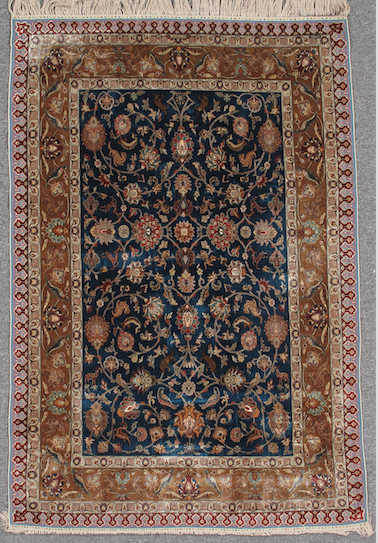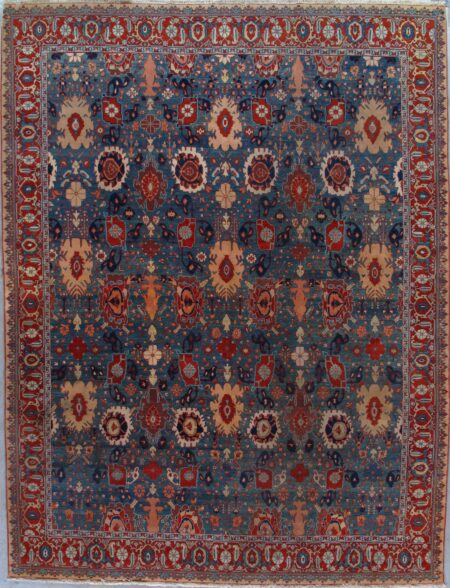Super Fine Kum kapi Silk Rug
| Design No.: | |
| Product Status: | In Stock |
| Construction: | Handmade |
| Materials: | Silk with Metallic Silver |
| Style: | Allover |
| Circa: | 1930 |
| Available Sizes: | 4.1X6.2 |
Call Today to Place an Order or If you have any Questions about Super Fine Kum kapi Silk Rug by phone:(212) 889-3326 or email:14rugs@gmail.com
Turkish Silk Rug
Kum Kapi
Doubly Signed in Turkish and Armenian “Shirinian”
Illegibly Inscribed in a cartouche in the upper right of the field
Silk warp and weft, silk pile with areas of metal thread brocade, areas of silk brocade throughout
Knot count about 1600 per square inch or 40 by 40.’
C.1930
This incredibly fine silk rug is one of the masterpieces of the Armenian interwar workshops established in the Kum Kapi district of Istanbul. The rich navy field displays a classic ragged palmette, saz leaf and rinceau allover pattern with two species of perching birds. The vinery is in two levels and the palmettes are both internally detailed and exceptionally varied in shape. Many palmettes have details in metal thread brocading, giving relief character to the individual elements. Across the horizontal centre is a row of concave, open diamonds enclosing petal rosettes. The light red main border shows pairs of rampant tiger-like creatures and further exotic birds. Around the edge is a reciprocal crenelation pattern of silk pile and brocaded areas. In the silk end weaves are are silk pile tufts. The palette contains at least 20 distinct tones.The Bursa silk pile is exceptionally lustrous and metallic, with an abrash-like sheen. Short pile with fully depressed alternate warps. The knot count is approximate, but it must be one of the finest rugs ever woven. The uppermost limit seems to be in a Mughal pashmina fragment of about 2100 knots per square inch. Certainly it is finer than almost any other Kum Kapi rug which may vary between 600 and 900 knots per square inch. The rug was woven from a cartoon and was the work of at most two weavers.The exact shop practices of the Kum Kapi master weavers have not been extensively studied, however. Shirinian is a very rare attribution and very few other rugs are known from this atelier, nor is the exact duration or precise location known.














